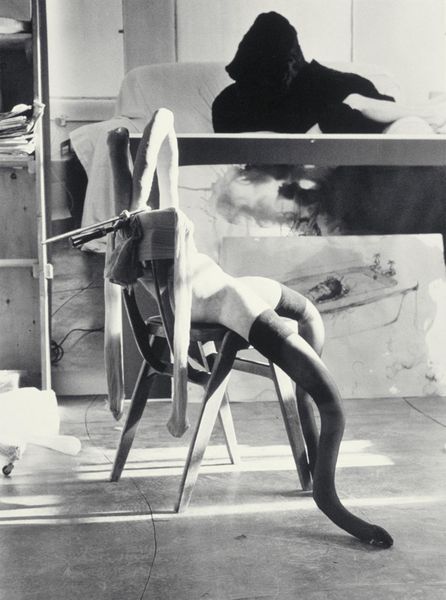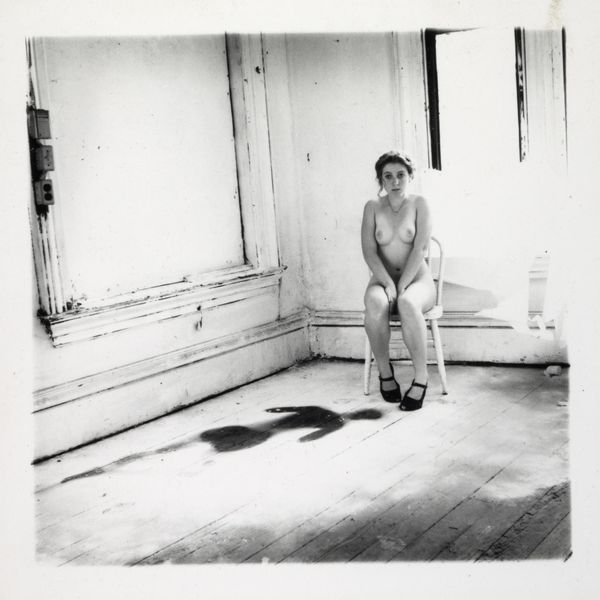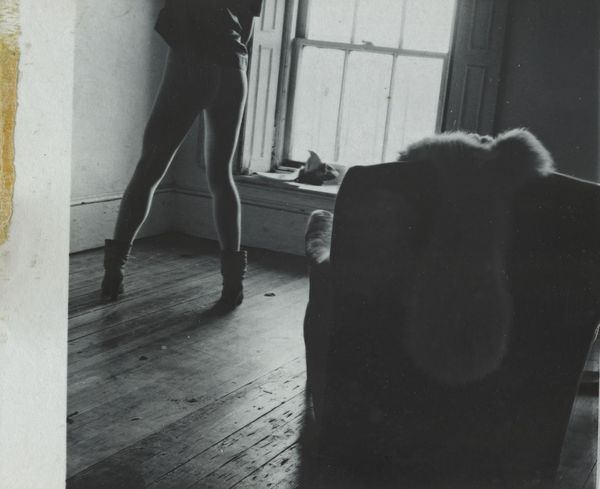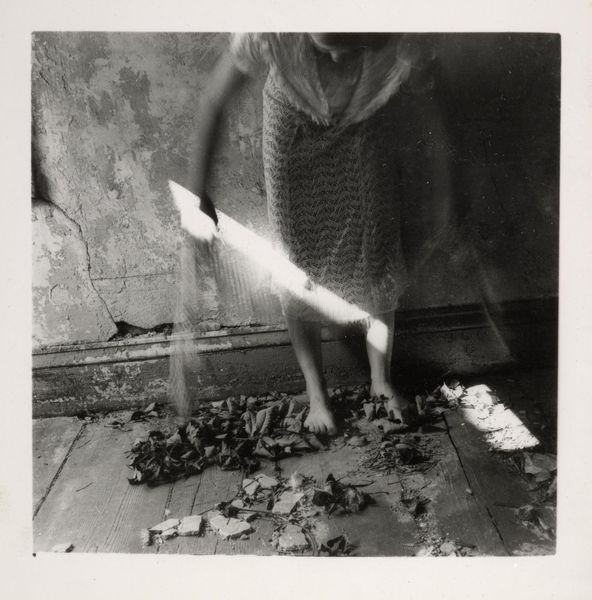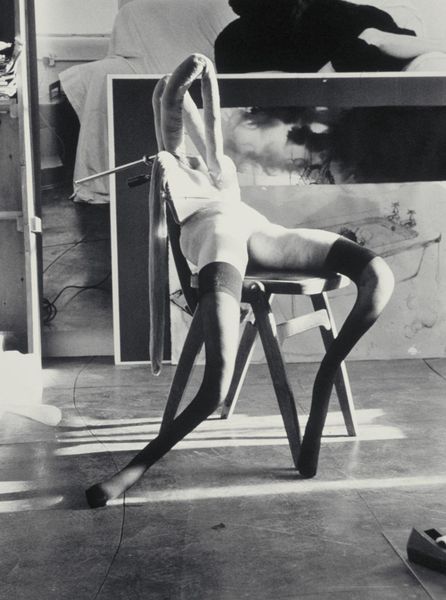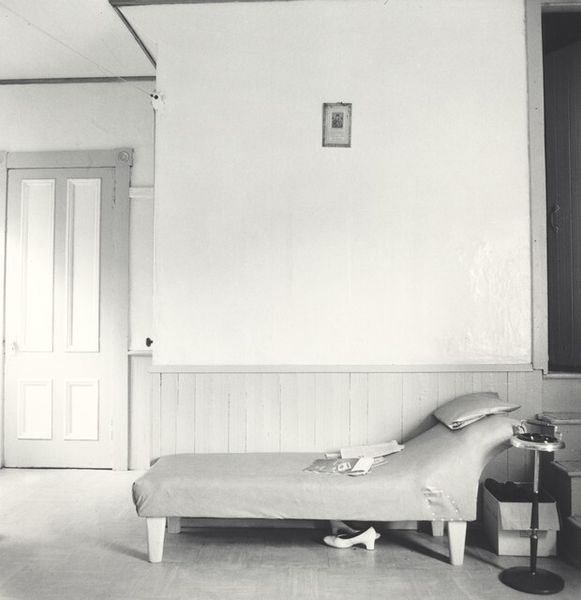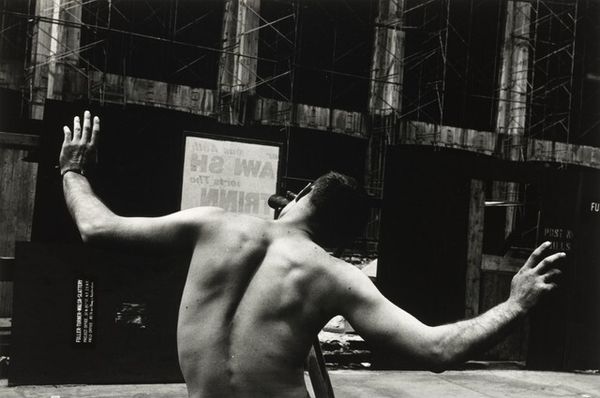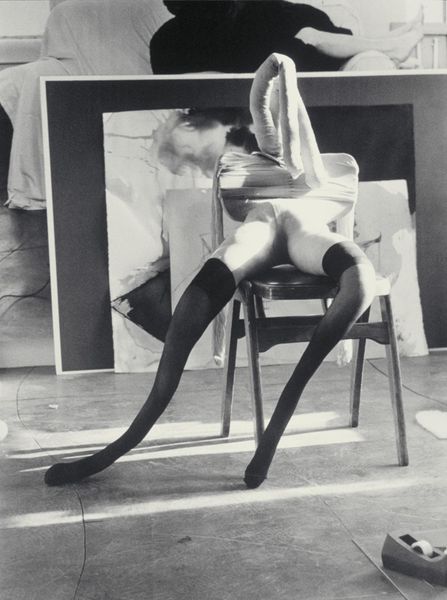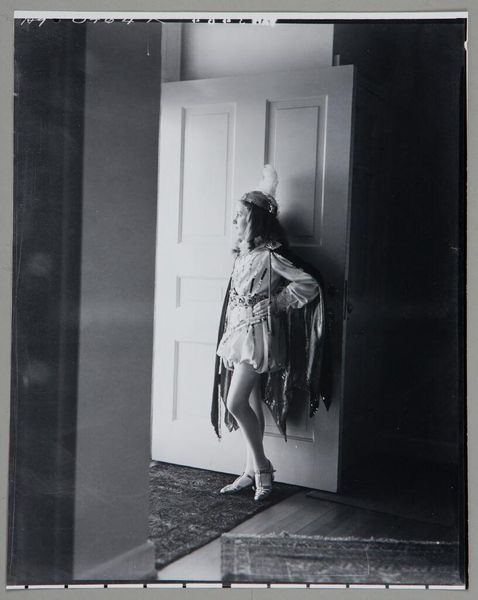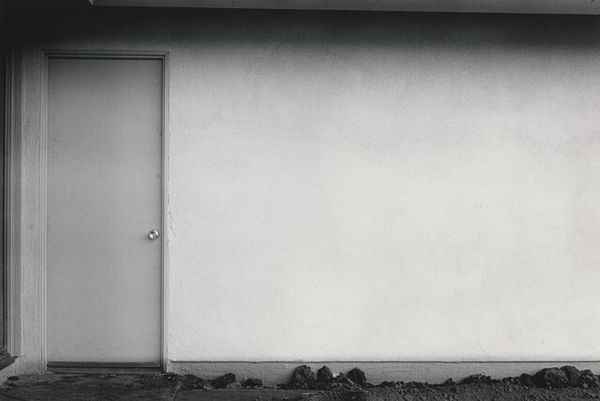
Dimensions: image: 109 x 109 mm
Copyright: © Courtesy of George and Betty Woodman | CC-BY-NC-ND 4.0 DEED, Photo: Tate
Editor: This is an untitled photograph by Francesca Woodman. The gelatin silver print shows a figure pulling up striped stockings. There's a mirror, and dresses hanging on the wall, but the figure's face is blurred. It feels very performative, almost staged. What do you see in this piece? Curator: I see Woodman using her body to explore the construction of female identity within confining spaces. The dresses, the mirror, the performative act of dressing—they all point to the rituals and constraints imposed on women. Woodman died tragically young. How does that influence your reading, especially in light of feminist theory? Editor: It adds another layer of complexity, a sense of fragility and perhaps a commentary on the male gaze, or the artist reclaiming it? I hadn't considered the performative aspect so deeply. Curator: Exactly. It’s about questioning power dynamics and challenging established perspectives. These images invite us to think critically about the gaze. Editor: I see it so differently now. I appreciate understanding Woodman's work in this broader, socio-political context. Curator: And that understanding, that critical lens, is essential for engaging with art that pushes boundaries.
Comments
Join the conversation
Join millions of artists and users on Artera today and experience the ultimate creative platform.
tate 8 months ago
⋮
Francesca Woodman stands at the far right edge of this black and white square photograph with her hands resting on her upper thighs so that she is slightly bent over. She wears long, horizontally-striped stockings that cover almost all of her legs. Aside from the stockings, she is naked. Her head and long hair are blurred in movement, and her hair obscures her left breast. To the left of Woodman hang a variety of dresses, one from a hanger on a horizontal beam with nails, and the others from tacks in a large panel on the wall. The wall is otherwise bare except for some cracks and areas of discolouration. Towards the bottom left of the image a wide-framed mirror – cropped half out of the image – sits on the floor against the wall and reflects several objects situated behind the camera.
